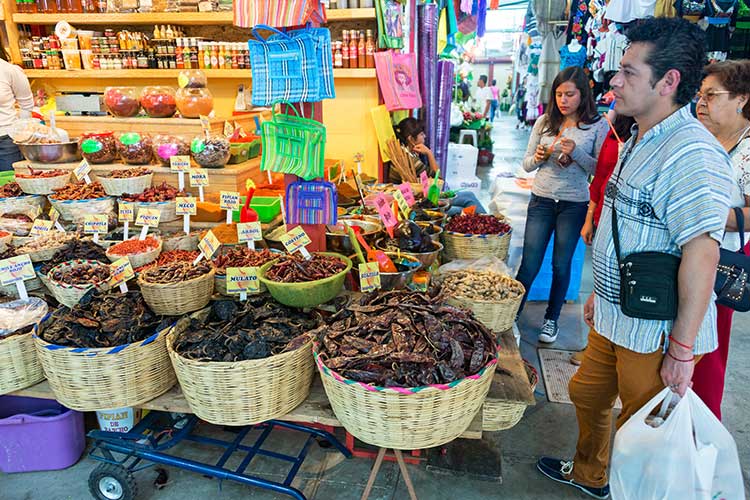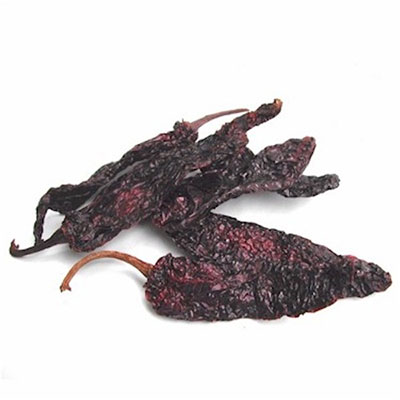Located in the south of Mexico, bordered by the states of Chipas (to its east), Guerrero (to the west), Puebla (northwest) and Veracruz (northeast) and the Pacific Ocean to the south, is the state of Oaxaca. The state is also the junction of the three grand Sierras (mountain ranges) – Sierra Atravesada, Sierra Madre de Oaxaca, and Sierra Madre del Sur. While Oaxaca has one of the most rugged terrains in all of Mexico, it is also home to numerous narrow valleys, canyons, ravines, and high plateaus, some of which can reach over 6,500 feet above sea level. It is here in the valleys and plateaus of Oaxaca that some of the finest and most diverse collections of chiles in the world are grown; among the rarest of which is the Pasilla de Oaxaca chile.
When growing the Pasilla de Oaxaca has green stems and leaves with white flowers. The chiles themselves taper from the top down and are about four inches long. They mature from green to a deep reddish colour. However, the chiles are left to partially dry on the vines themselves before they are harvested. They are then fully dried and smoked in large, traditional ovens by placing them over a very low heat for several days. It is this process that gives the chiles their distinctly delicate smoky flavour. It is this smokiness that also makes the chile work well as a spice. In addition to their smokiness, the Pasilla de Oaxaca also have and an earthy, raisin, and licorice flavor, and comes in at somewhere between 4,000 to 10,000 SHU, making it a medium heat chile.
Pasilla chiles form the core base of traditional Oaxacan moles. They are also more commonly used in vegetarian dishes, where the smokiness creates a similar flavour to meat, without actually involving meat in the dish. They are also delicious in chili, salsa, slow-cooked roasts, sauces, and glazes.

It is generally recommended to rehydrate and soften the chiles before use. This can be done by simply placing them in a covered pot of hot water for about 15 to 20 minutes; after which you can drain and rinse under cold water. You can now split them open, removing the seeds and stem, proceeding to use them whole or even chop or process them. Alternatively, they can also be added while dry to long-simmering soups or braises and are generally removed before serving.


